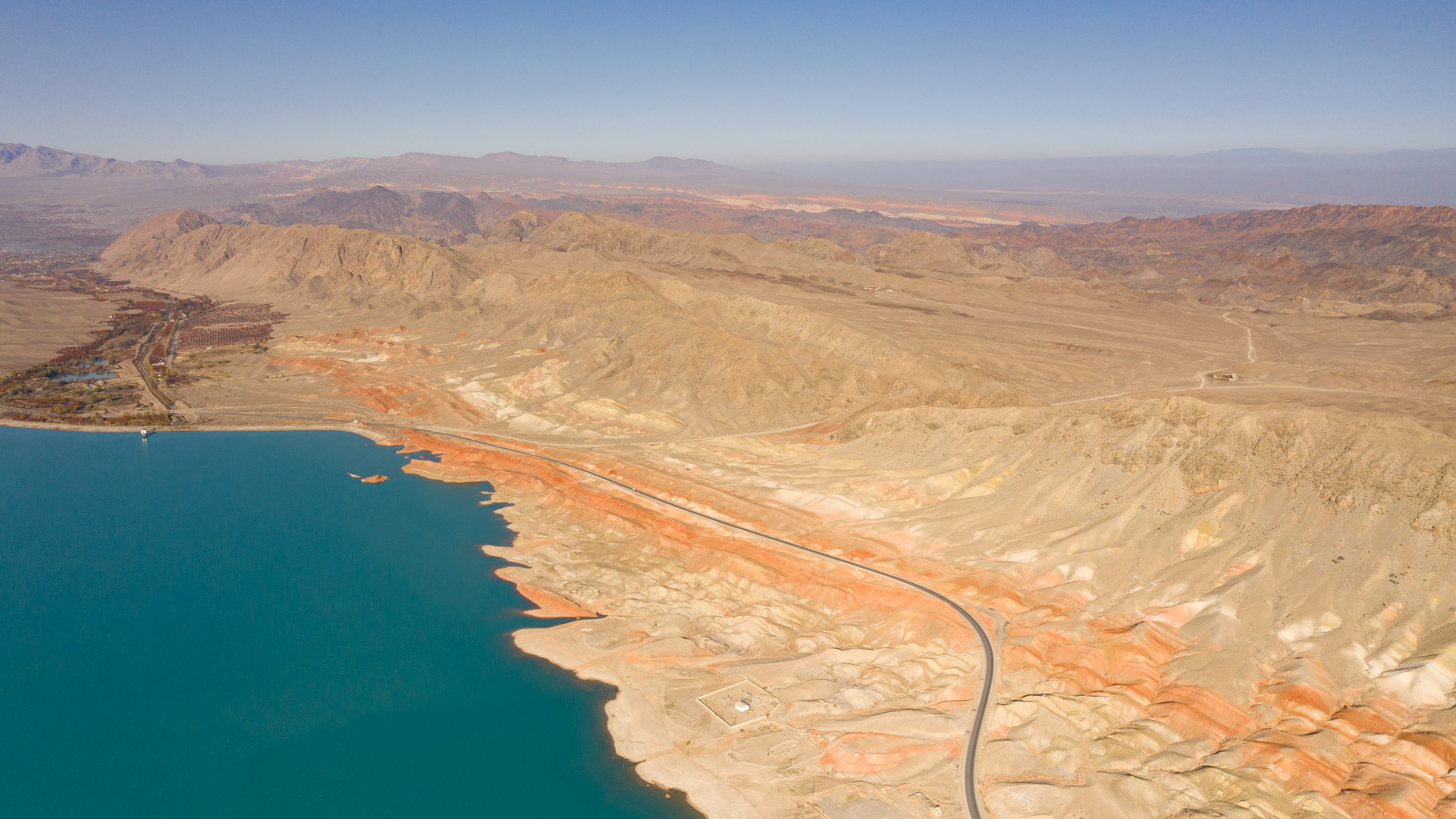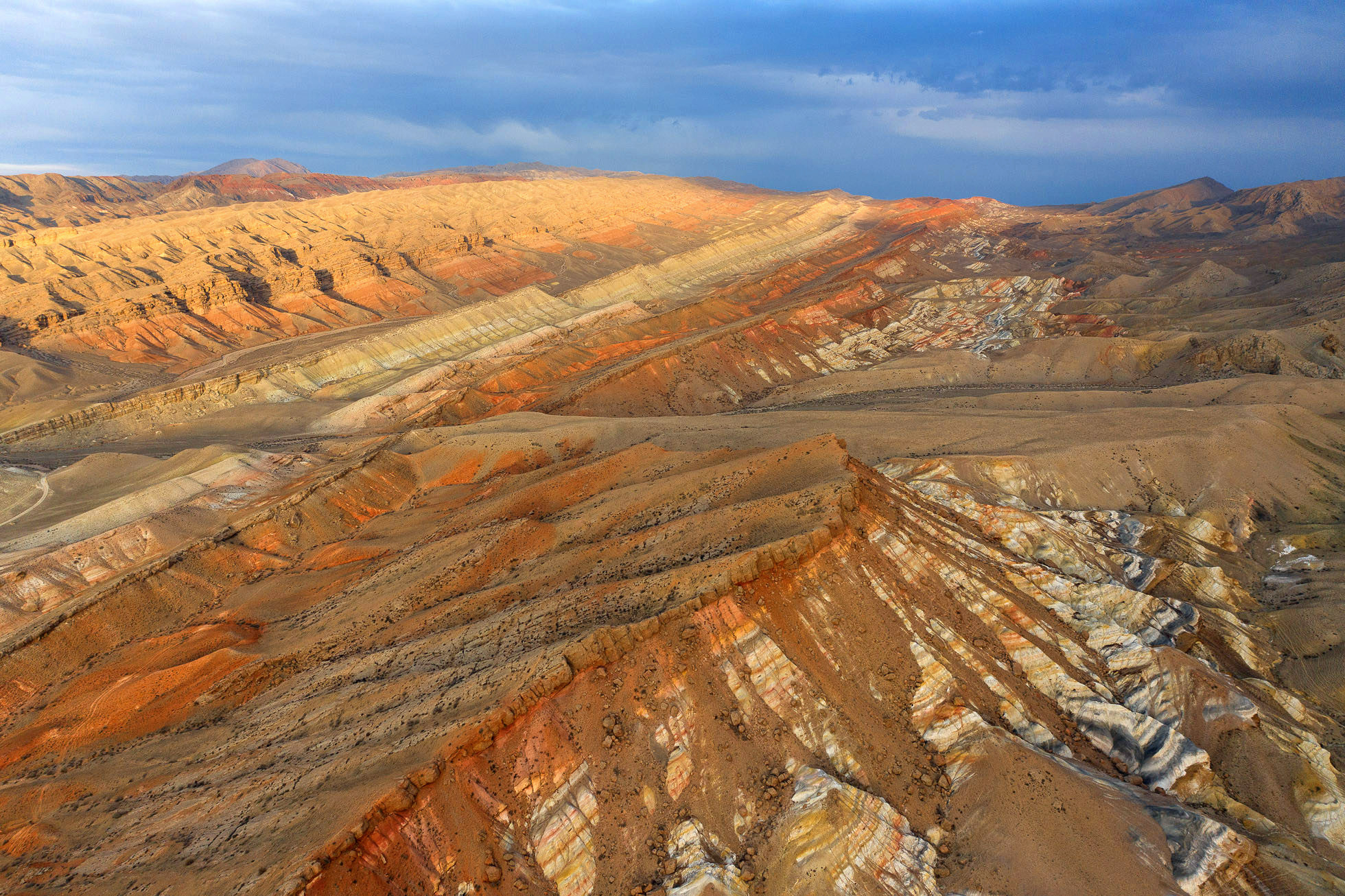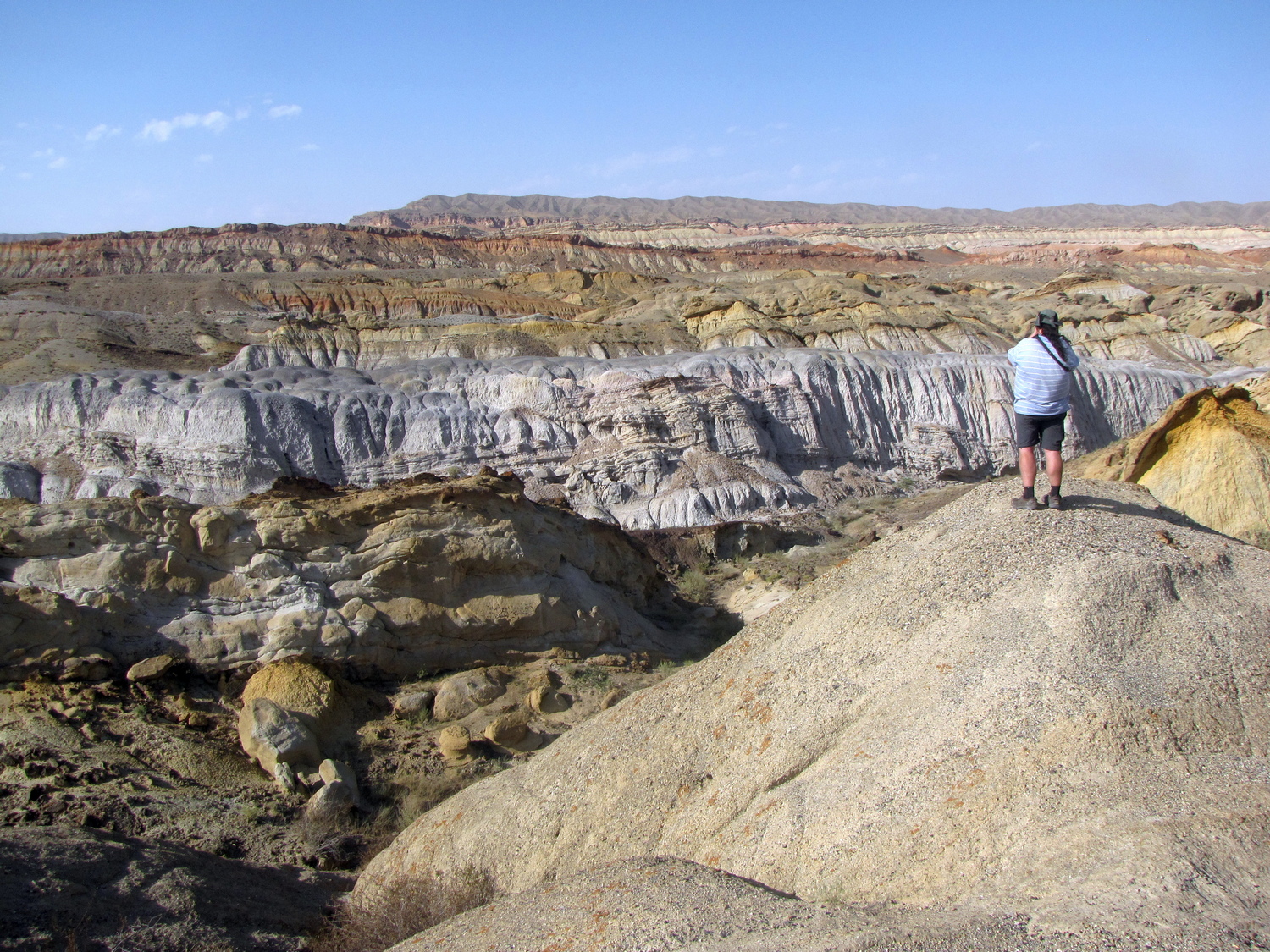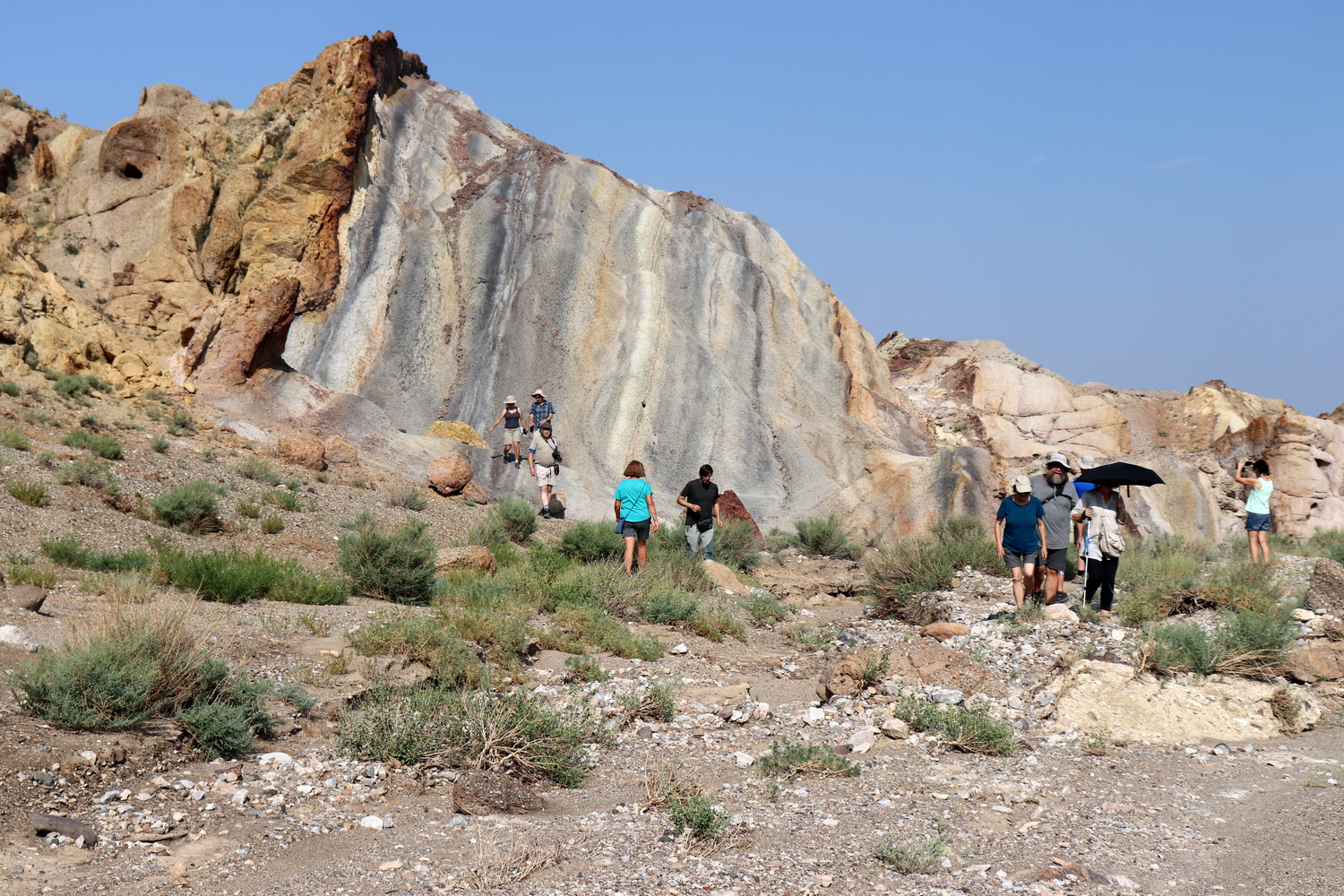The Madygen region in southwest Kyrgyzstan, Central Asia, is known to paleontologists around the world for its unique non-marine fossil Lagerstätt of the Middle Triassic Madygen Formation (Voit et al. and amphibious animals and organisms in the continental area after the mass extinction and recovery at the end of the Permian period. The Madygen Formation unconformably overlies Paleozoic rocks and is overlain by a succession of Late Triassic, Jurassic, and Cretaceous sedimentary formations. In turn, the Mesozoic layers are covered with Cenozoic deposits, the so-called Fergana Bay of the Paleogene Tethys Sea.
The excellent conditions of the clearly presented geological sections in a semi-arid area with little vegetation, form a colorful variegated low-mountain landscape, which facilitates litho-stratigraphic studies of rocks, as well as the collection of fossil fauna and flora. These conditions make Madygen one of the most attractive places, both for professionals involved in geological, paleontological or paleclimatic research, and for geotourists interested in landscapes and geological excursions. In the Madygen Geopark, there are also various archaeological and historical monuments of cultural heritage, which are also waiting to be explored. The unique area of Madygen represents an ideal location for the creation of the first UNESCO Global Geopark in Central Asia, which is currently being prepared under UNESCO IGCP Project 727.
At present, despite the available results, Madygen remains an unexplored geosite. This area on the Eurasian continent is for long-term research. Therefore, all participants of the summer school will have real opportunities to implement joint scientific research of the Meso-Cenozoic fossil flora and fauna and an excellent international platform for new cooperation.
In addition, the geopark presents sections with Paleozoic trilobites, as well as conodonts.
The program of field excursions includes the famous cave mine Kani-Gut and its surroundings. The ancient mine reflects the 1500 year history of the development of mining on the Great Silk Road. The first who used Kani-Gut as a deposit were the Chinese, then the Arabs, Karakhanids, etc.
Our geological routes around the geopark are designed in such a way that the participants of the summer school learn the history of the development of an ancient mine. In turn, various geological sections very clearly demonstrate to the participants examples of sedimentology and tectonics. The Madygen Geopark presents a geological history spanning 450 million years, from the Cambrian to Quaternary rock deposits. Madygen is a great testing ground for learning geology. Madygen is a geological treasure of international importance.




















